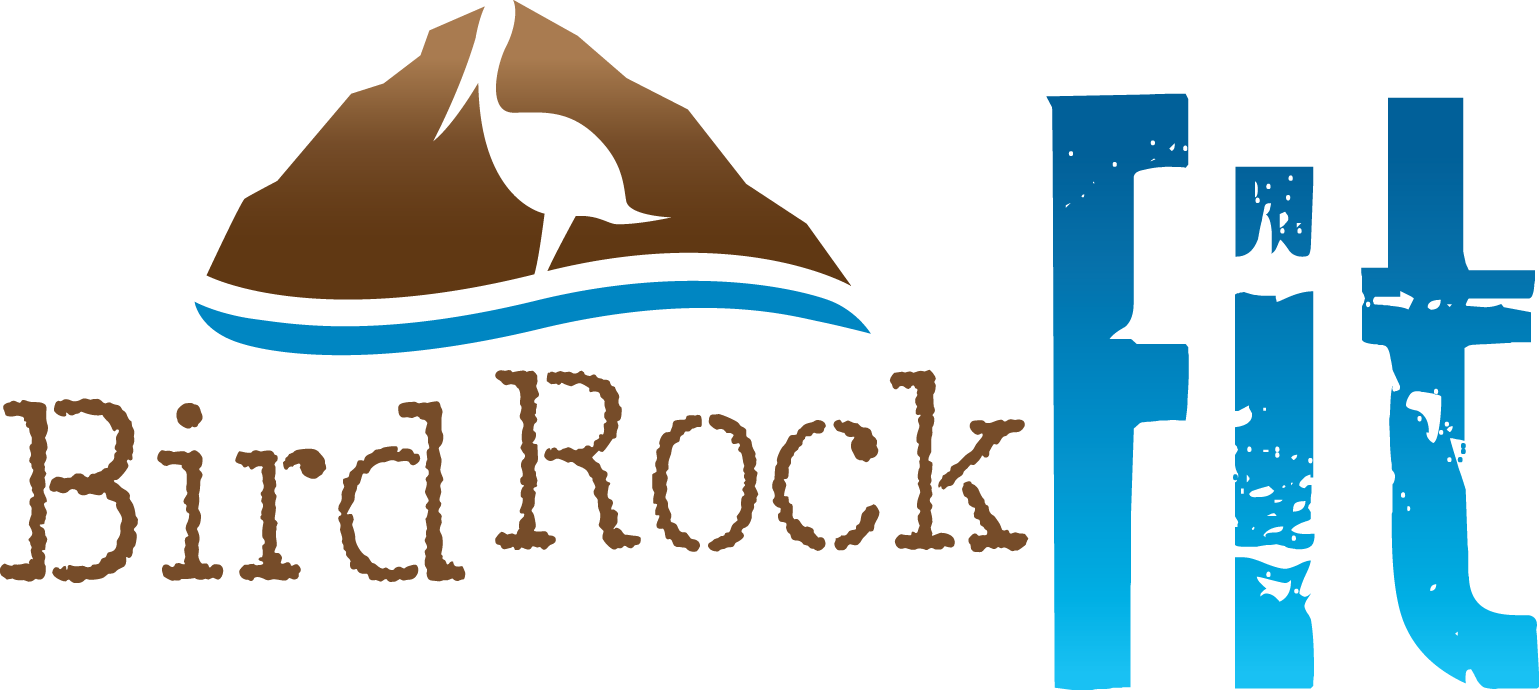How increasing your protein intake can help you achieve your fitness goals.
By Katelyn Castro
You can bet this month’s inspiration came from one of our very own Bird Rock Fit members. I frequently get questions on ways to decrease muscle soreness and increase energy, and my first question is, “What is your post-workout nutrition like?” I generally follow up with what a normal day might look like in terms of nutrition and one thing I find is that we could add some extra protein into the mix.
Considering the time-restraint some might have during the day or week to meal plan and prepare, an added boost of protein can come from protein powders. Add protein powder to a smoothie or favorite drink, top your yogurt then add your go-to berries and nuts, or blend it in with breakfast oatmeal or muffin batter.
Sounds simple, right? What about the variety of protein powders to choose from? This can get tricky when choosing a protein powder since the brands are endless. Below is a quick breakdown of a couple popular types of powders and what to look for.
Whey Protein
Considered the “Gold Standard” for protein amongst athletes, whey is a complete protein, meaning it contains all the essential amino acids our bodies require daily. More importantly, it is rich in branched chain amino acids (BCAA’s), which metabolize directly into muscle tissue, making it available energy for exercise and strength training. If you missed last July’s post discussing BCAA’s, check it out here. (insert link) I recommend finding a whey protein isolate versus a whey protein concentrate because isolate is a purer form of whey protein and contains less fat and lactose per serving. Additionally, it tends to be easily digestible and absorbable (1).
Pea Protein
Vegetarians, vegans and individuals looking to minimize animal protein consumption should look into pea protein, which is also highly digestible. It is perfect for intense activities–like what you would see at the studio–and for endurance activities. Pea protein, derived from the yellow pea, contains BCAA’s to help muscle protein synthesis. You can also find pea protein to contain glutamine for nitrogen and immune restoration after intense exercise, lysine for growth and bone heath, and arginine to help maintain lean body mass (2).
I prefer a whey protein isolate because it has more research behind it and I know it works for me. If you have a dairy sensitivity, whey may or may not irritate it and so pea protein can offer an alternate solution. As always, check the supplement quality status found at any of these sites before making a purchase: www.uspverified.org, www.consumerLab.com, and www.nsf.org.
Lastly, aim for a daily protein intake of 0.8 grams per kilogram (conversion is 2.2 lbs per kg) of body weight. If you consider yourself to be highly active, increase your protein intake to 1.2 g/kg of body weight daily.
For a more in-depth look at your protein or nutrition intake, Katelyn can be emailed at katelyn@birdrockfit.com.
1. Sharawy, Ahmed. “The Effects of a Pre- and Post-exercise Whey Protein Supplement on Protein Metabolism and Muscular Strength among Elite Wrestlers.” Ovidius University Annals, Series Physical Education and Sport/Science, Movement and Health. Jan. 2013: 5-6. Health and Wellness Resource Center. Web.
2. “Pea Protein a Valuable Ingredient for Sports Nutrition and Everyday Food.” International Food Ingredients 1 (2008): 27. Health and Wellness Resource Center. Web.
